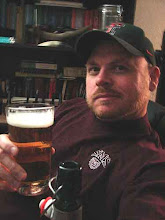 Dreadnought is the second book by Cherie Priest in the steampunk Clockwork Century series. The first book in the series, Boneshaker, was quite well received and features a strong female protagonist with memorable characters. She continues that tradition in this book.
Dreadnought is the second book by Cherie Priest in the steampunk Clockwork Century series. The first book in the series, Boneshaker, was quite well received and features a strong female protagonist with memorable characters. She continues that tradition in this book.As the story begins, we find the heroine of the story, Vinita "Mercy" Lynch, working in Virginia as a nurse in a war hospital that serves the South during this alternate history of America. She soon receives news that her husband, who was fighting for the Union, has died in a POW camp. Soon after, she learns that her estranged father, who she has not seen since she was very young, is deathly ill and he requests that she come to see him--in Seattle, WA. Having no reason to stay in Richmond, she decides to travel alone through the war, across a dangerous and unincorporated western prairie and over the Rocky Mountains to a strange city on the other side of the continent.
Along the way, she travels by dirigible, steam boat, and the infamous Union-operated steam engine Dreadnought, a terrifying weapon of war that often transports the dreadful steam-powered "walkers" of mass martial destruction. She also becomes involved in a political struggle between the Union, the Confederacy, the Texan Republic and Mexico--all seeking the answer to this question: What happened to a lost legion of Mexican soldiers and why are they eating people in Utah?
I quite enjoyed this book. I love the steampunk genre but Priest does a good job of writing her protagonist as an ordinary human being just doing her best to survive the strange circumstances in which she finds herself. Her narrative is tight, descriptive and introspective. For instance:
She felt alone, in the middle of everybody--even the other civilians who hunkered in the ceter passenger car and read books or played cards or sipped out of flasks to pass the time. She was the only medical professional of any sort on board, which meant that every stubbed toe, every rheumy eye, and every cough gravitated her way for analysis and treatment. It was the nature of the beast, she supposed, but even these small ailments did little to punctuate the wary boredom [1, p. 296].
This humanizing, descriptive prose also extends to action passages:
The hum started slow, and low; it began distant, and thundering, and rough. A cloud clearing its throat, or a mountain shrugging off a small avalanche. A windmill caught in a gale, shuddering and flapping. The conductor called for it, saying, "More hydrogen! Divert it from the secondary boiler! Just power the plow first--we won't move without it!" With more fuel, the hum came louder, and steadier. It went from the crooked fan blade, unbalanced and wobbling, to a smooth and vocal growl that rose up so loud that it almost (not quite, but almost) dampened the sound of Theodora Clay and the men in the passenger car firing; the Mexican inspector, still upright, still shooting, and now openly crying; and the undead hoards oncoming [1, p. 356].
Overall, this is a good, solid read that delivers action, adventure and dirigibles. What is not to love about that? It also touches on race relations, class distinctions and gender roles but all in the modern understanding of each. Still, if you enjoyed Boneshaker, this novel does provide a less pessimistic view of the world (even though its troubles deepen for the entire continent) while continuing the overall tale. I recommend it.
-Safari Bob
[1] Priest, C. (2010). Dreadnought. New York: Tom Doherty Associates. ISBN: 978-0-7653-2578-5






No comments:
Post a Comment